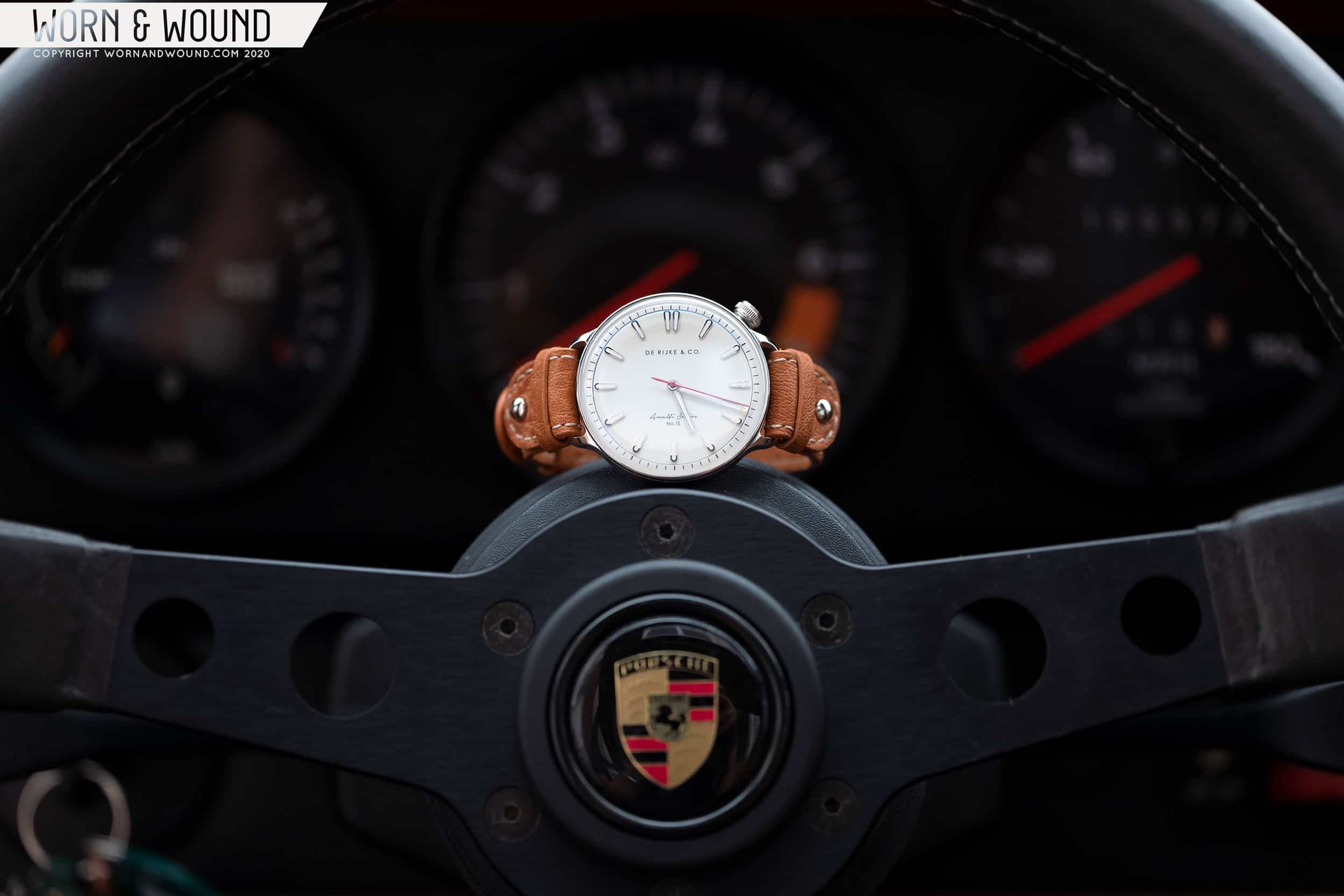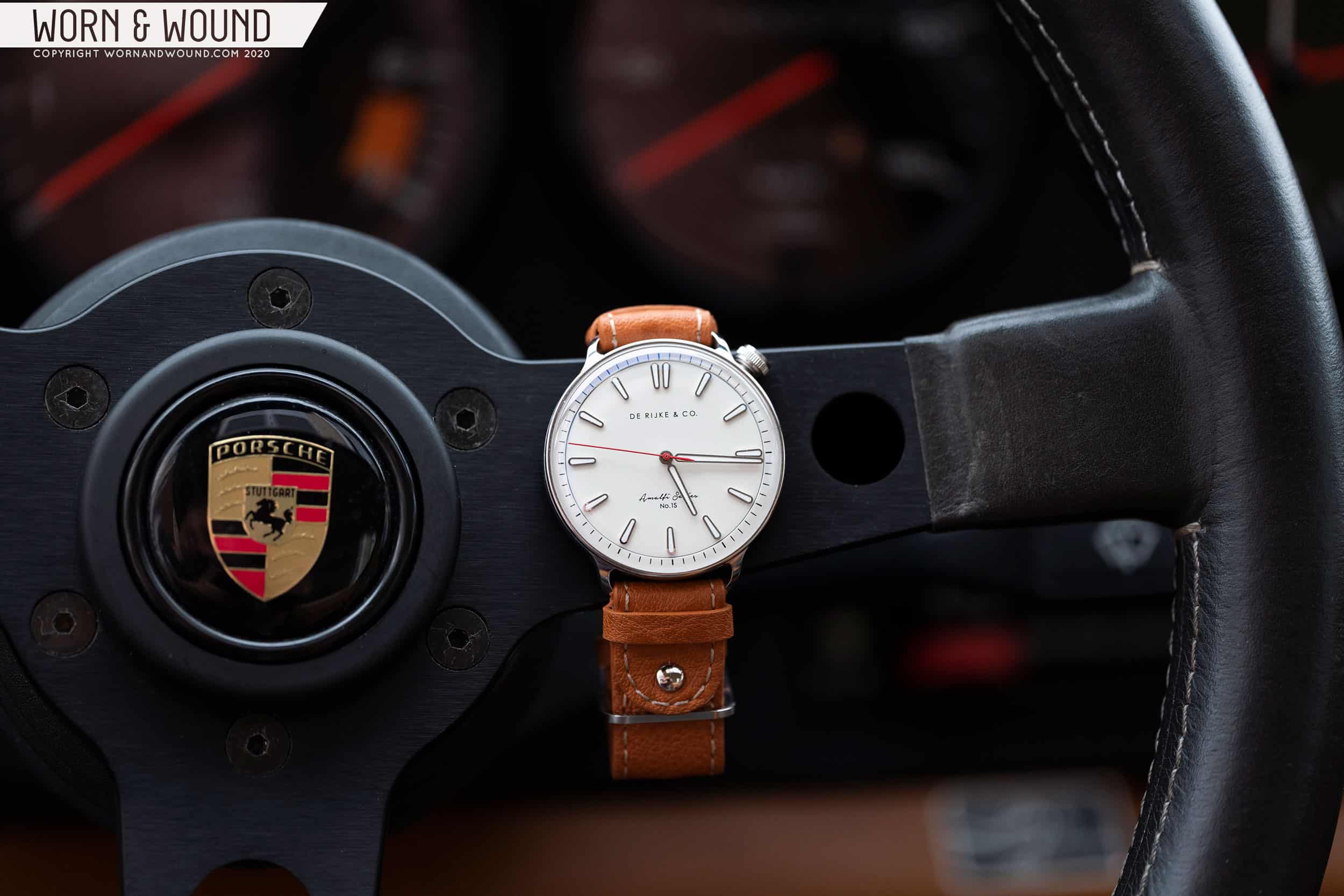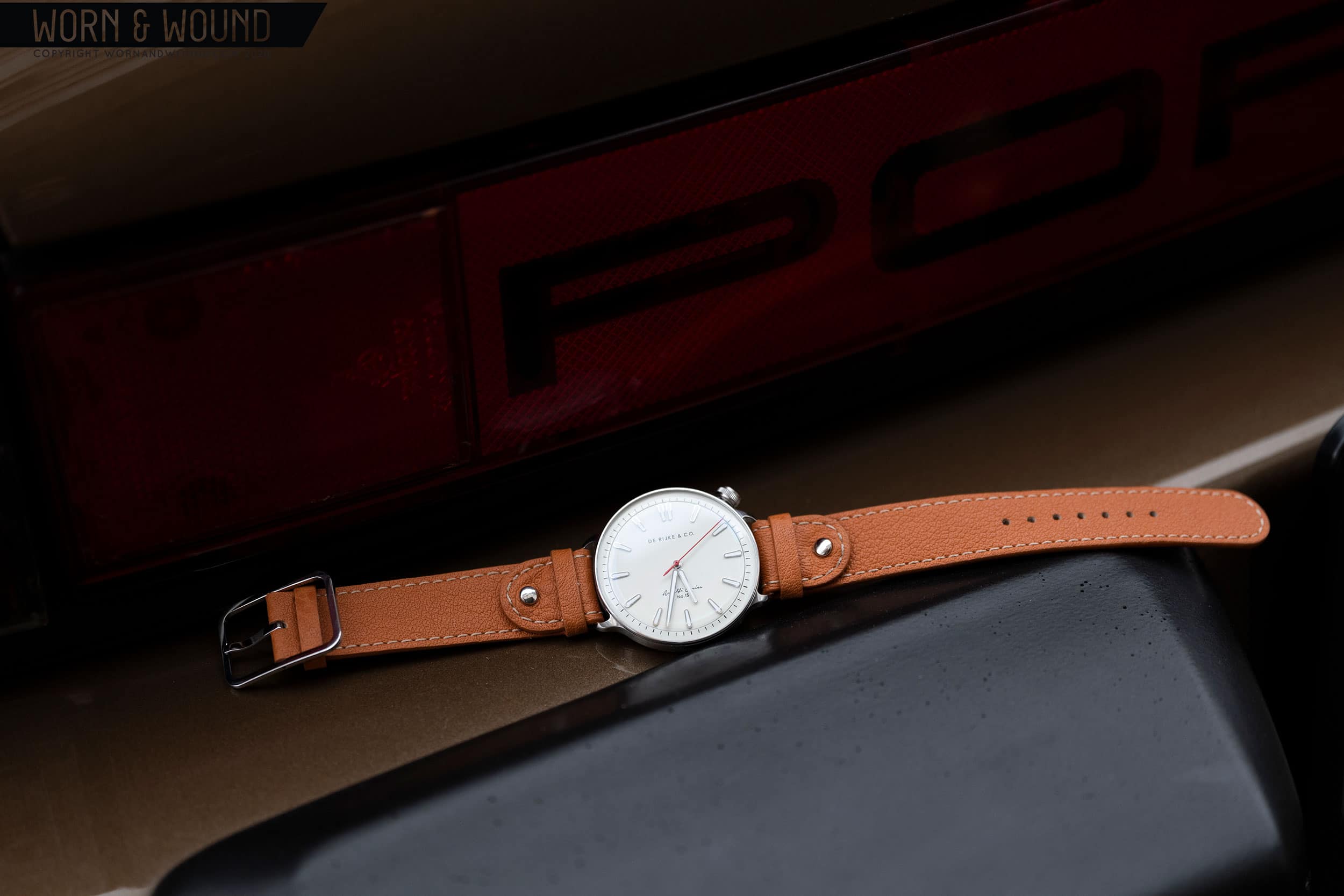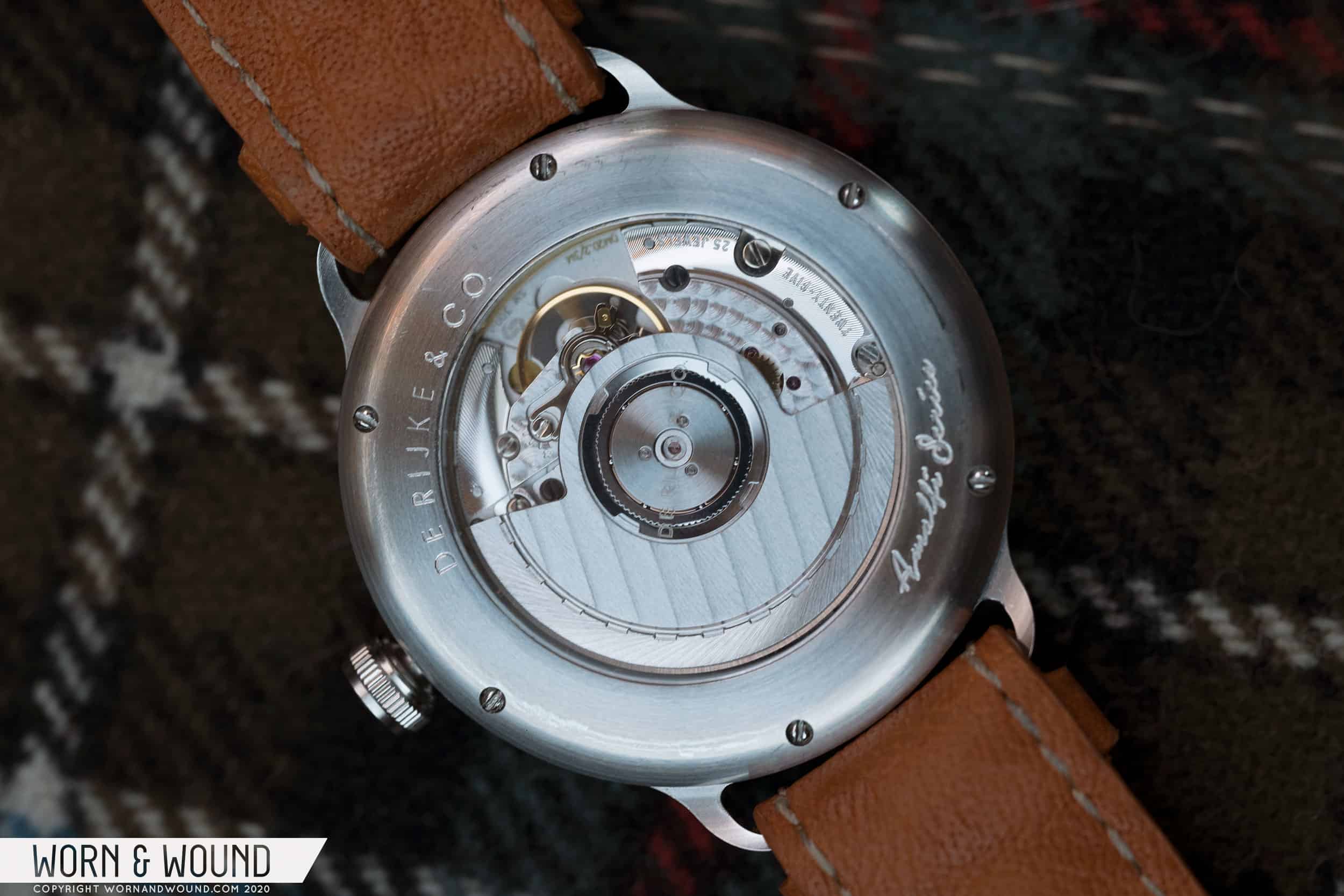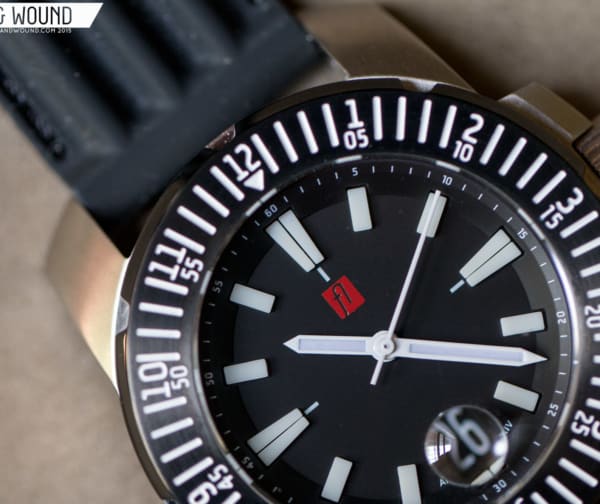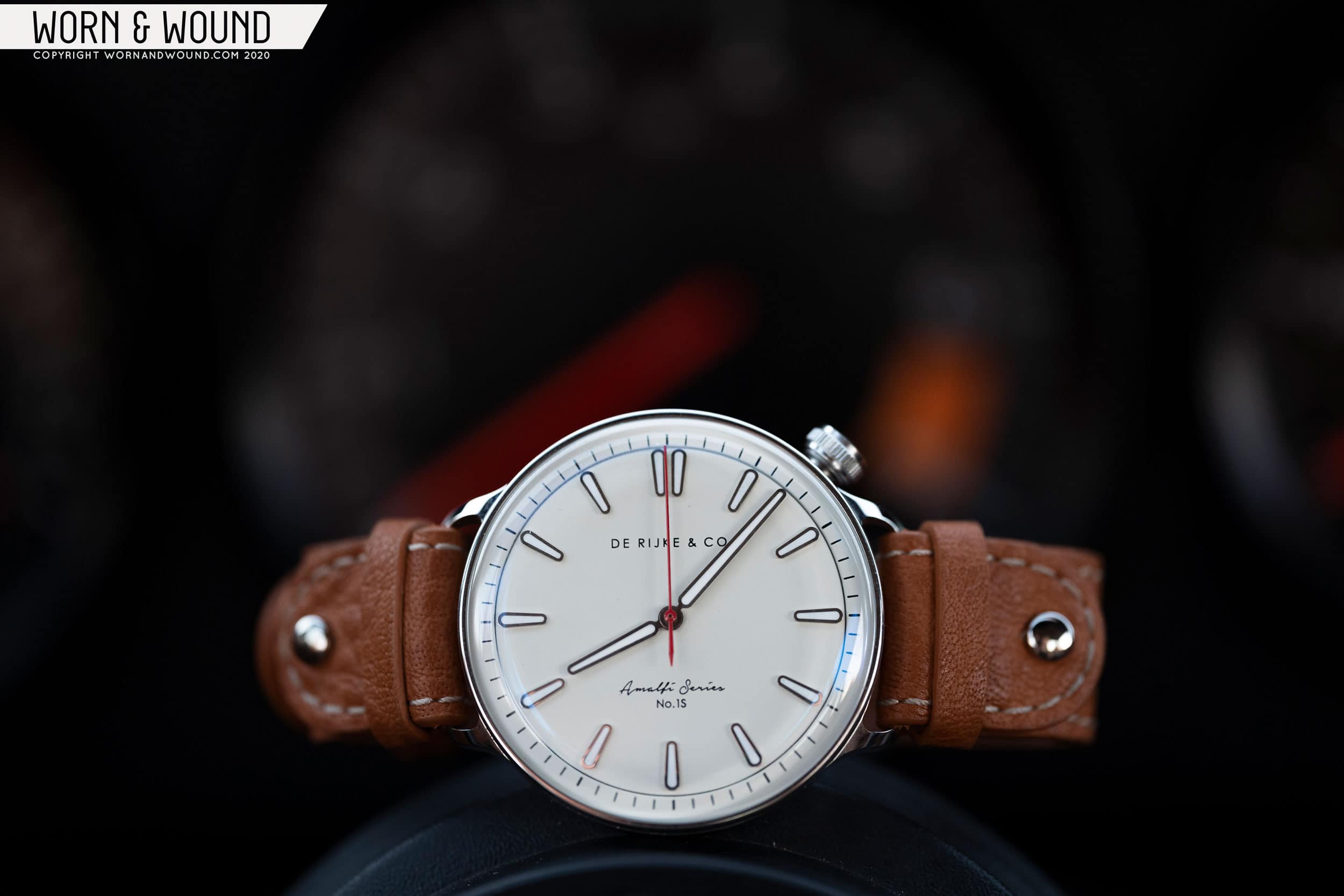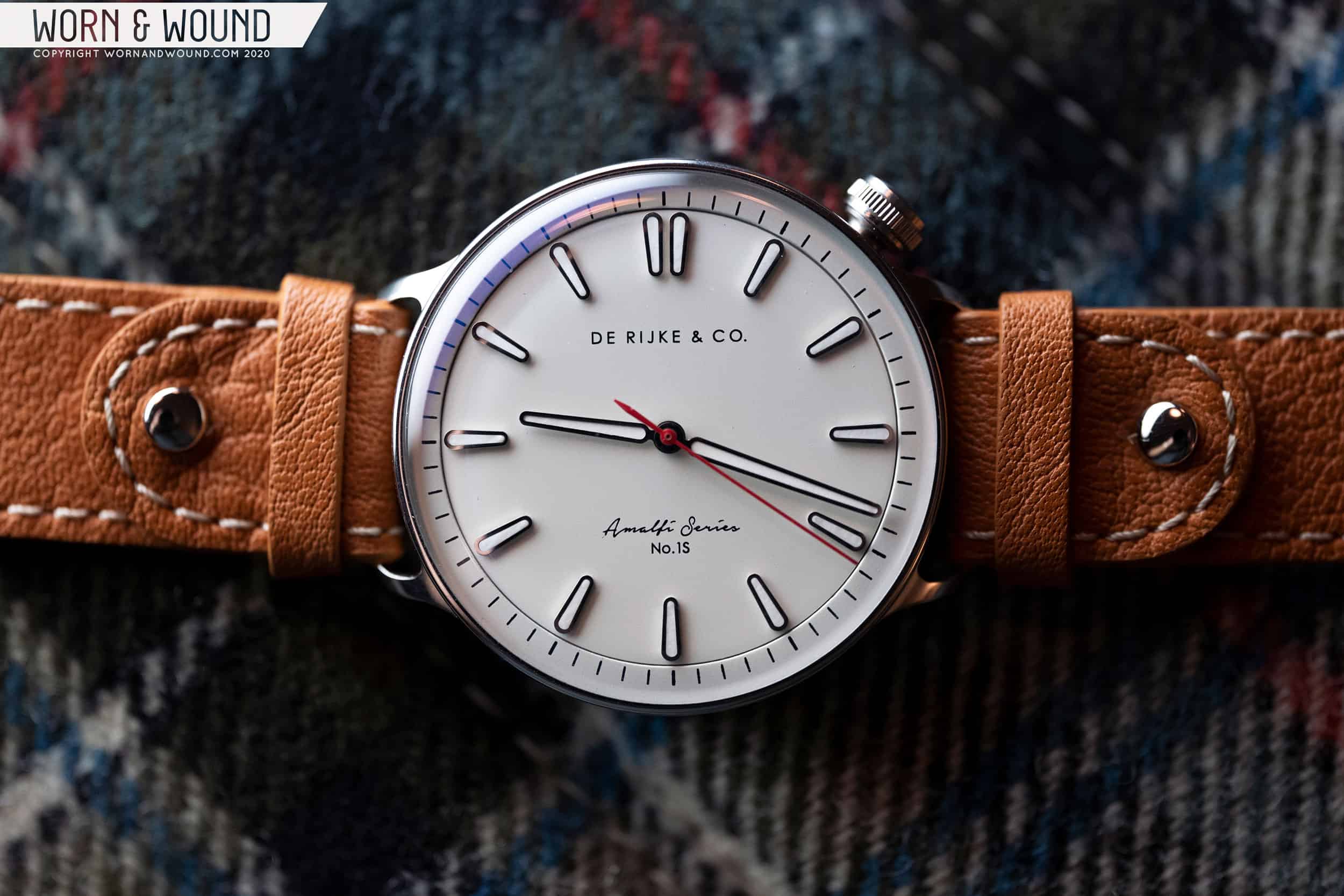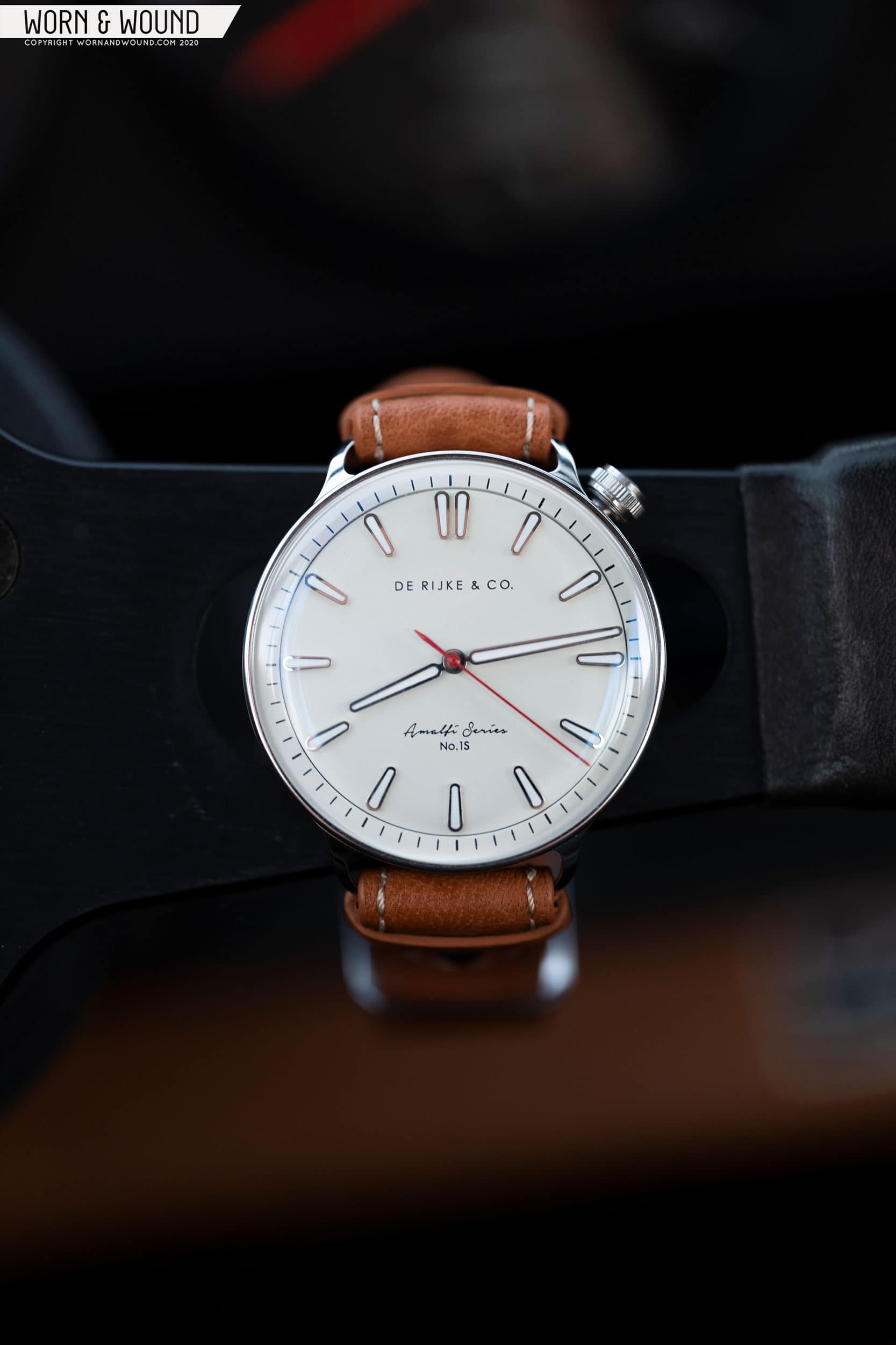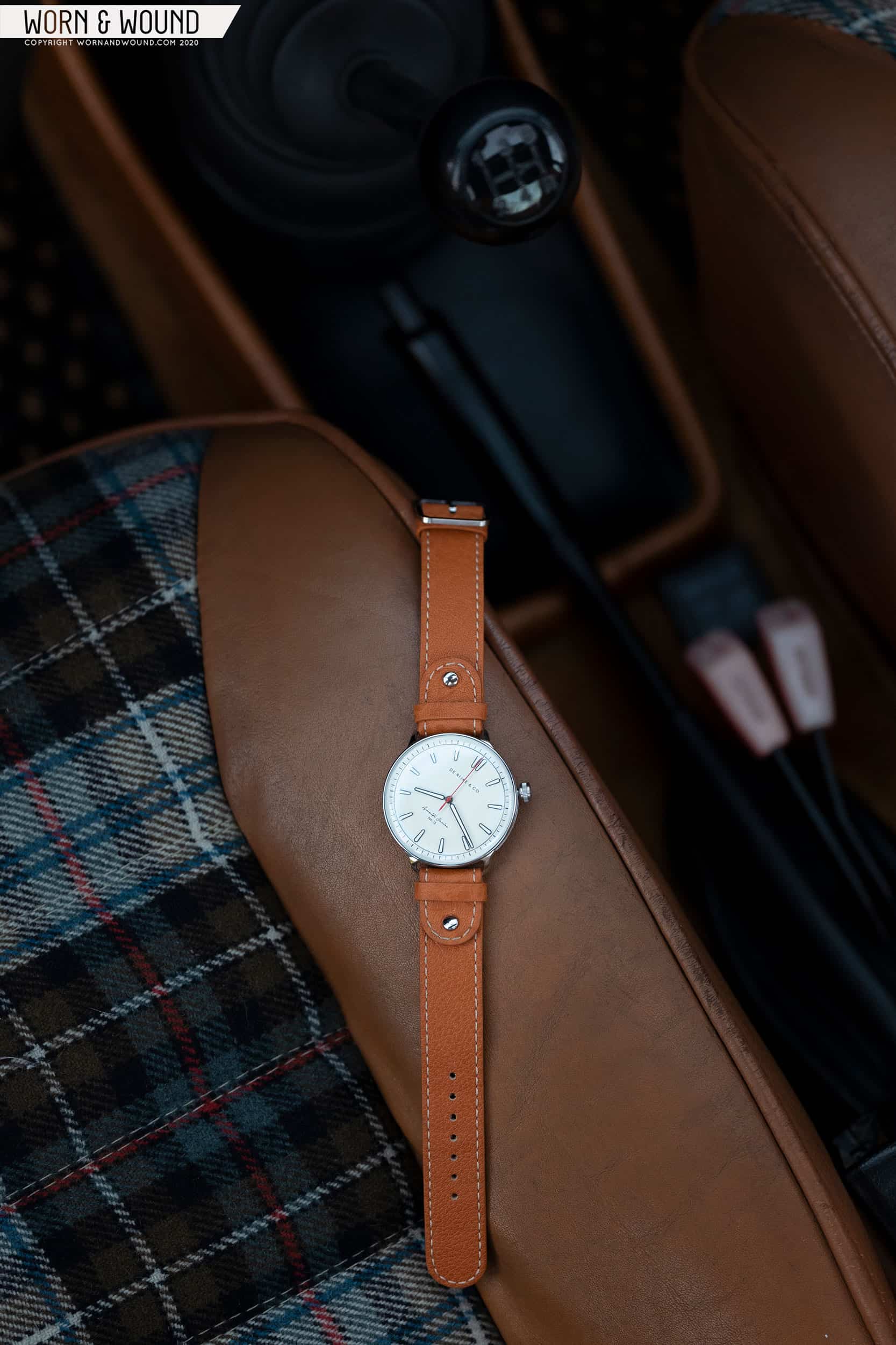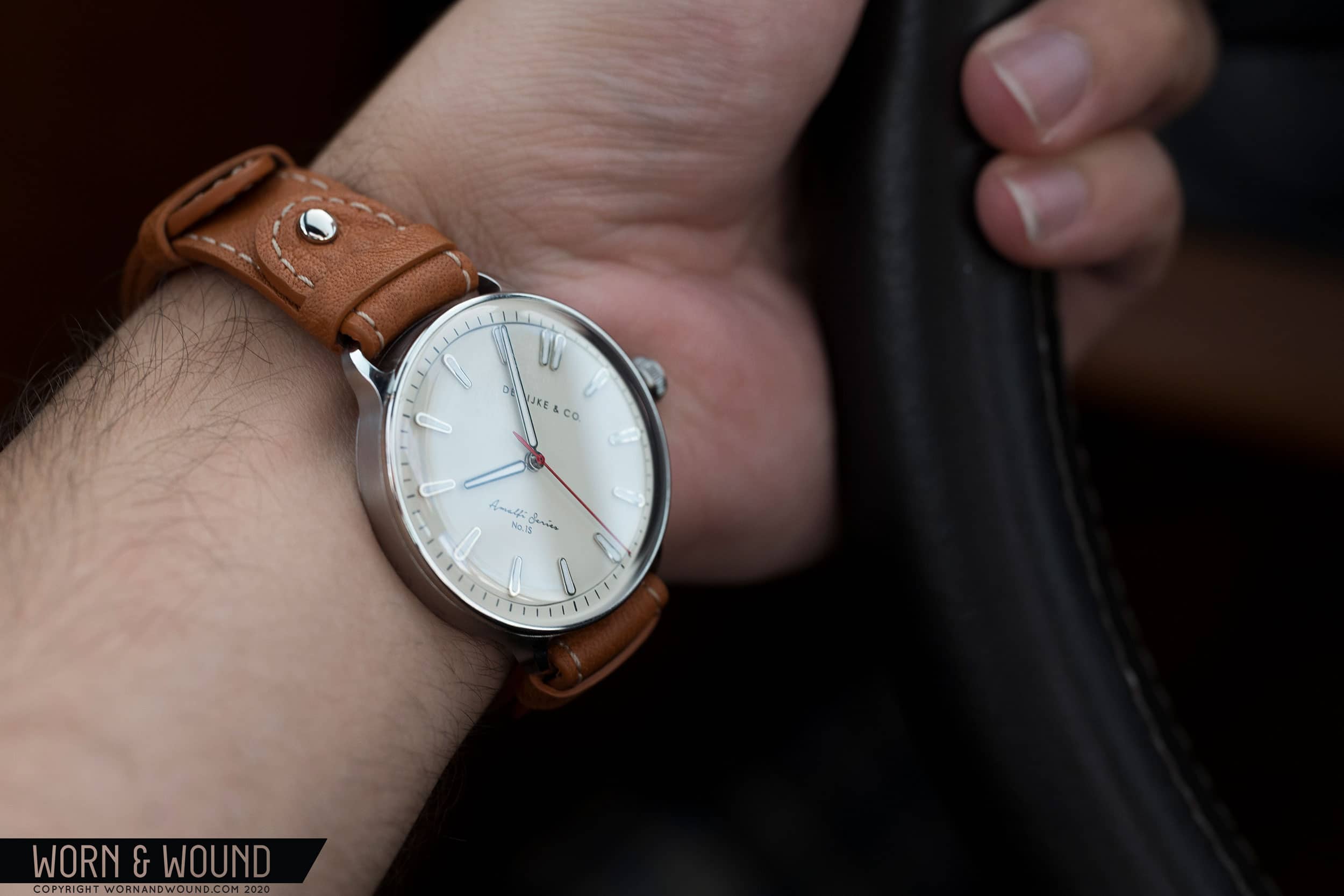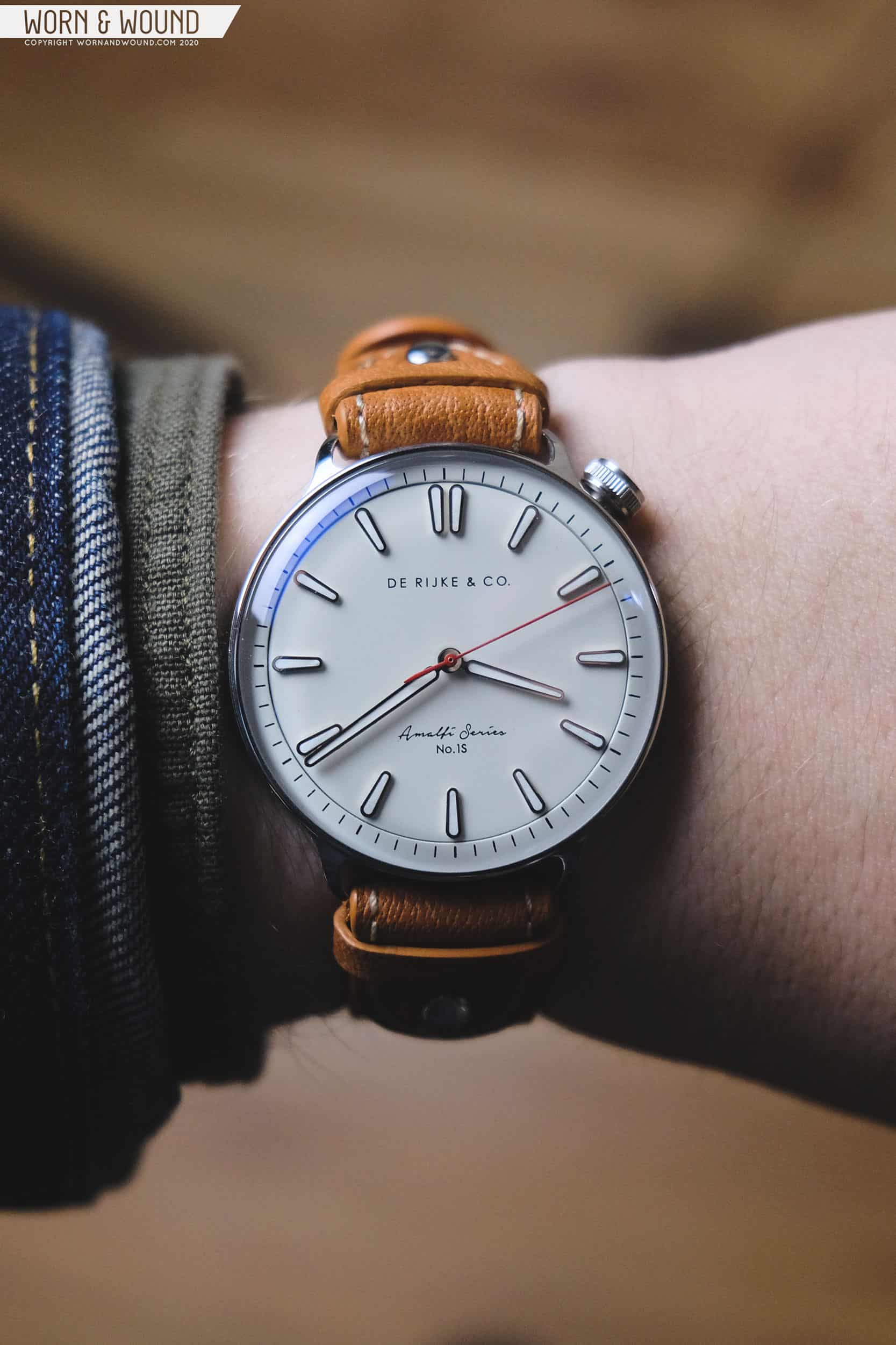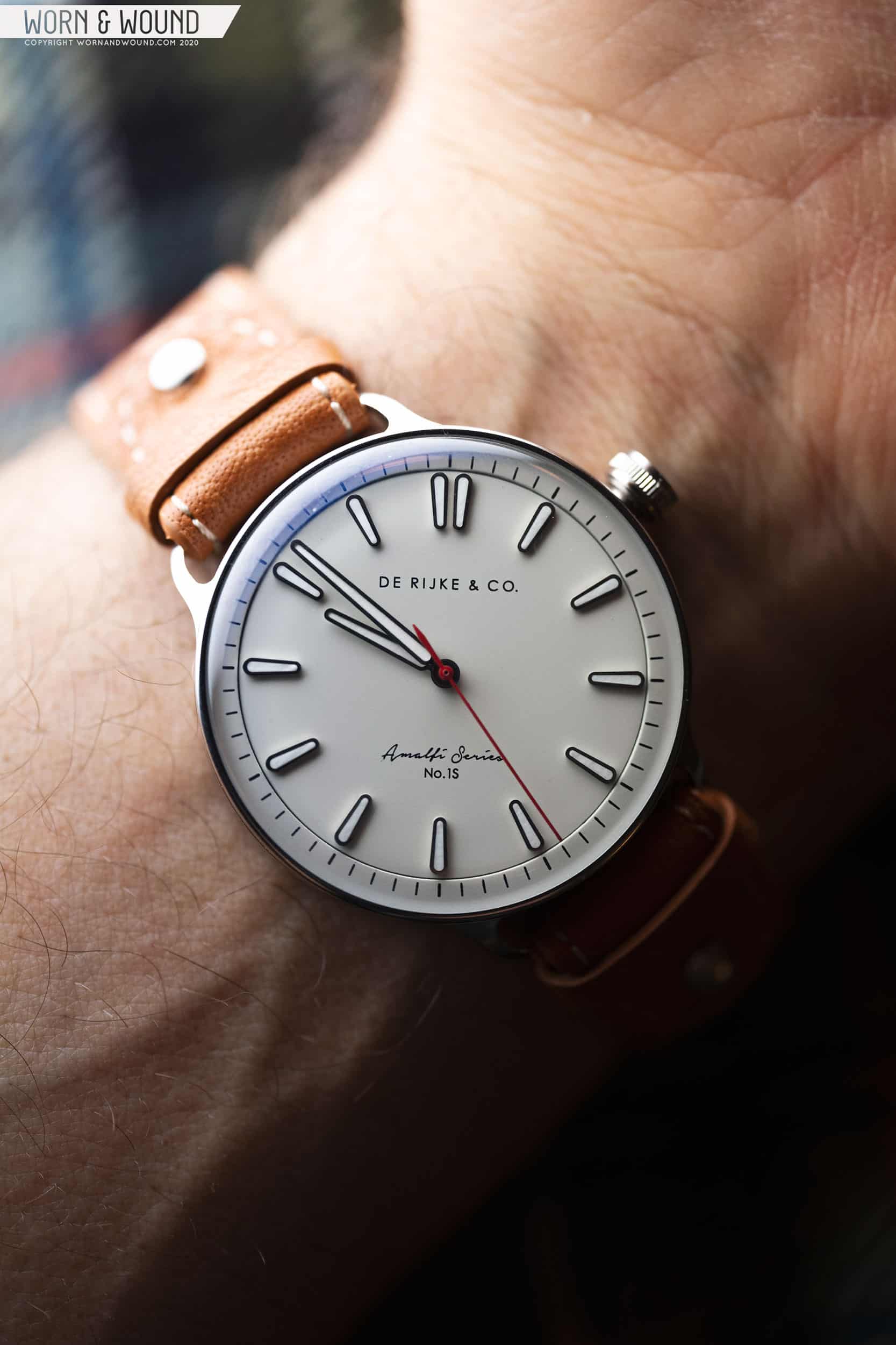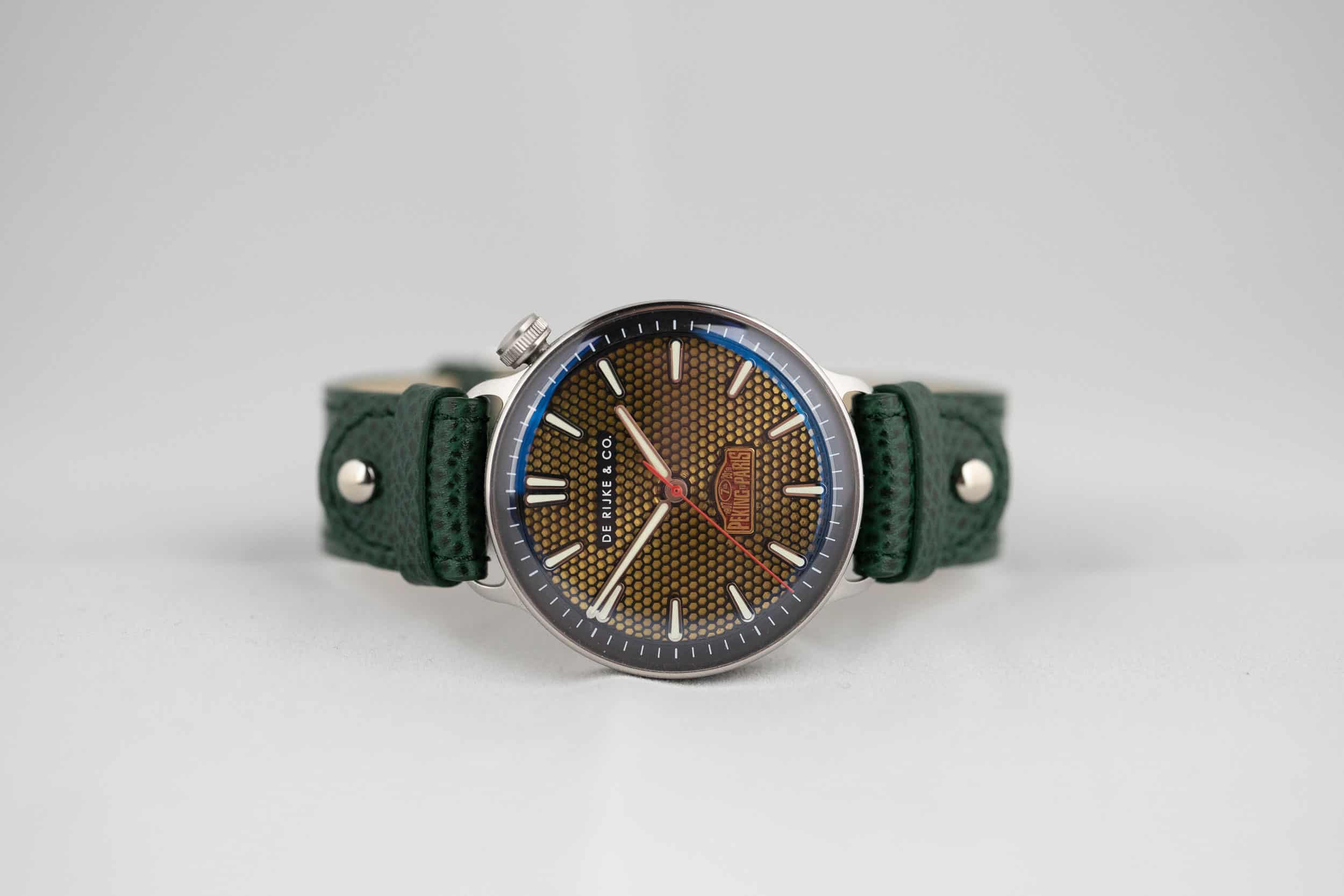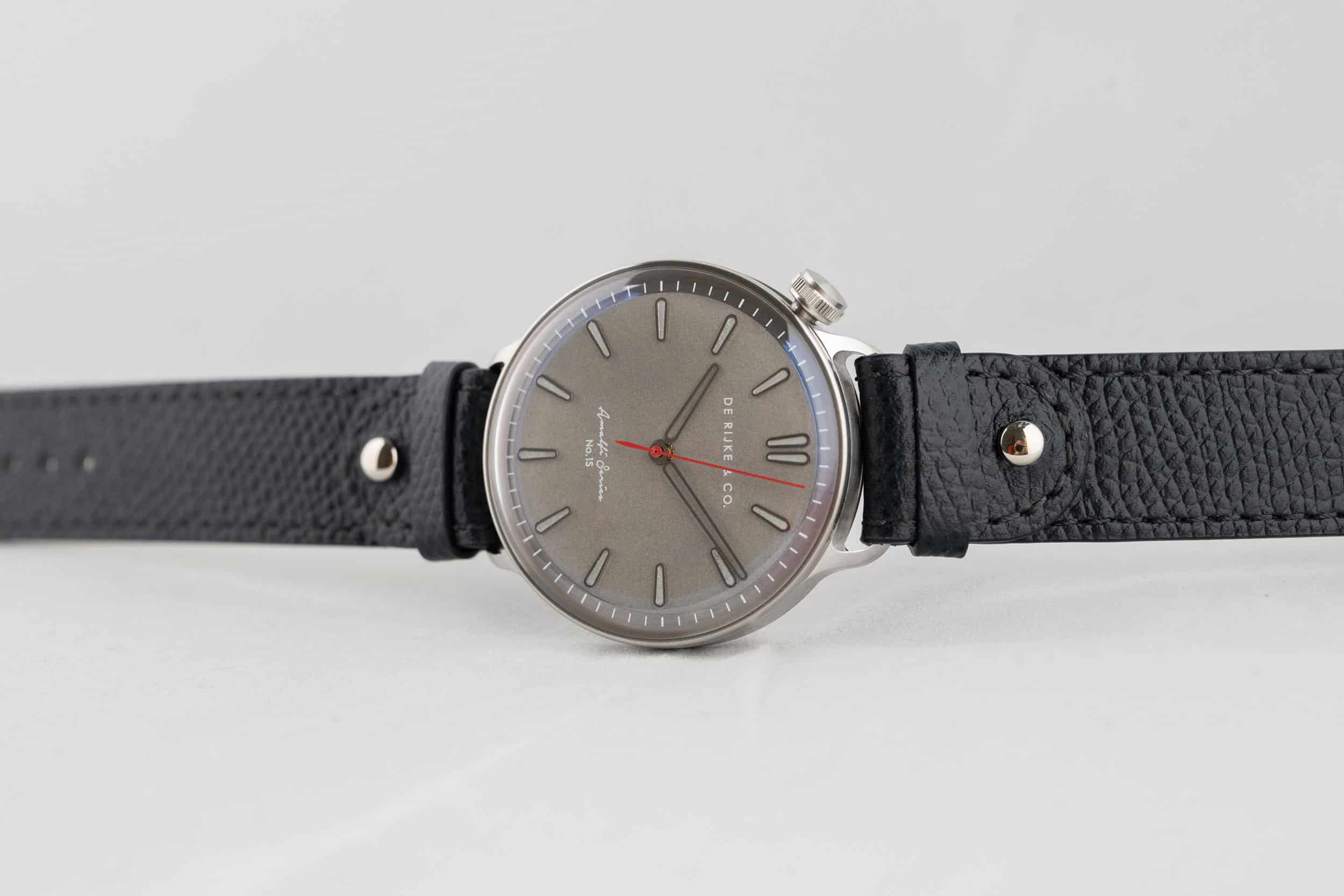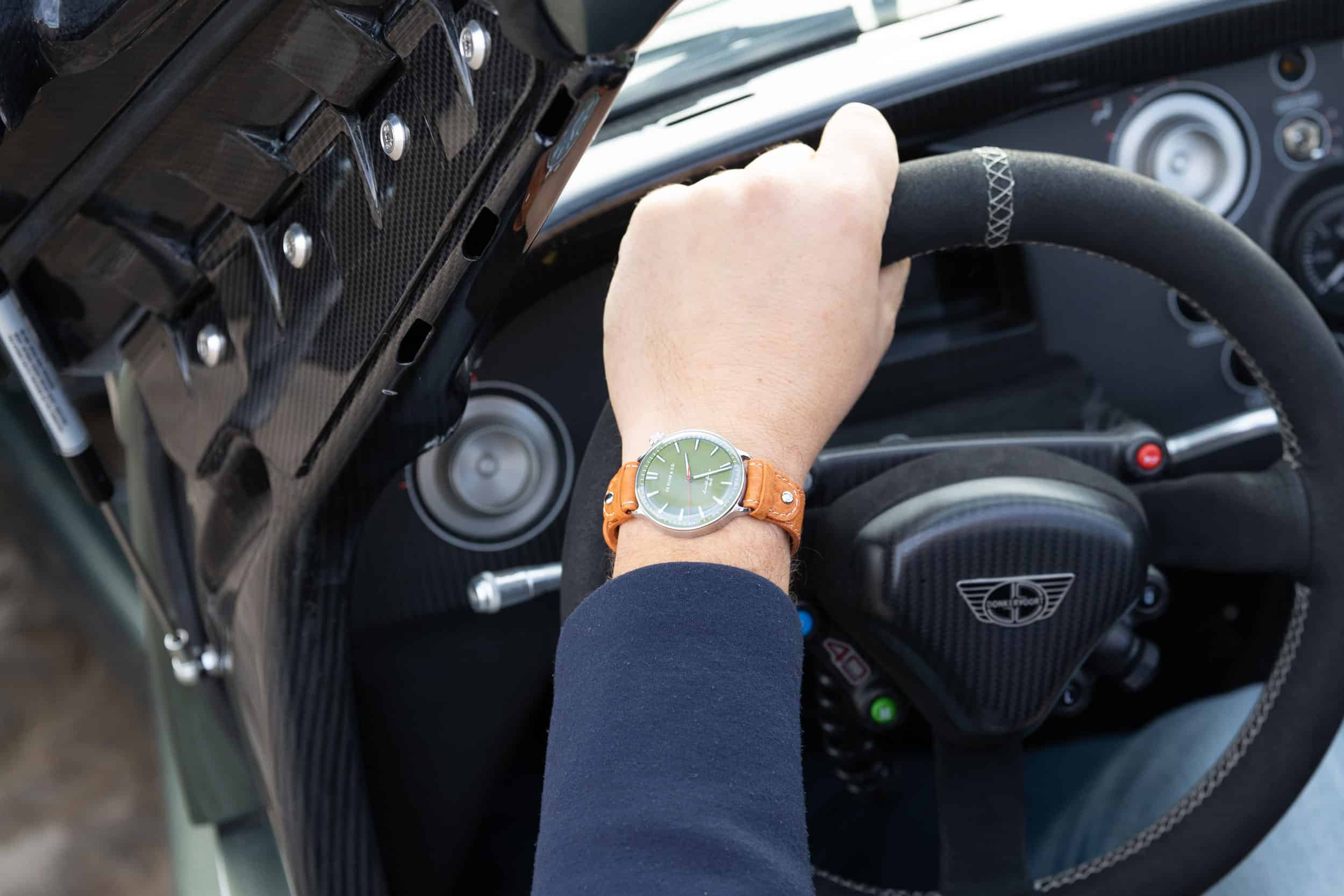Often with watches, we are promised something that goes above and beyond just telling time. Whether in the form of water resistance that can survive terrifying depths, the ability to measure lap times and speeds to absurd precision, or track the motion of celestial bodies to name but a few, watches do a lot of stuff that frankly, we don’t often need. When I first saw the De Rijke & Co. Amalfi 1S driving watch, I had a feeling that it would fall into a similar category. Novel, but unnecessary.
Before getting to the watch, a quick intro to the brand. Based in the Netherlands, De Rijke & Co. is a relatively new company founded by Laurens De Rijke, a designer and engineer. Inspired during an 11,000 kilometer Vespa ride, Laurens designed the Amalfi series to be an ideal watch for the “gentleman driver.” That is to say, not race car drivers or those who aspire towards achieving high speeds, but rather those who drive for the pleasure of the road and the landscapes they traverse. The name exemplifies this, being taken from a romantic notion of driving along the Amalfi coast. First launched with a limited edition of just 99 pieces, the Amalfi 1S is now back in a non-limited, but still numbered edition.
The trick up the sleeve of the Amalfi 1S is the ability for the dial to swivel within the case, allowing it to be oriented at different positions within a 90-degree arc. The idea is that the watch can transform and be worn at various angles to best suit the needs and, perhaps, style of a driver at any given time. That includes strapped under the wrist, with 12 at 3 while driving down winding roads, on top of the wrist with time at 12 when stopped for a cappuccino, or anywhere in between.
While not the first watch to move 12 from between the lugs, the Amalfi is one of only a small few to allow for a “choose your own angle” approach (look up the Seiko Izul, you can thank me later). What’s more, is that it does so with the utmost elegance. Typically, driving watches veer towards aggressive styling inspired by the masculine machines they are meant to accompany. The Amalfi, as said before, is more about the experience of the weekend cruise. As such, the design is restrained, discreet, and bears no overt automotive references. It’s also chock-full of surprising and well-considered details.
Prior to trying out the watch, while I found the concept appealing, I questioned its utility. It definitely seemed like a clever function and was at least different than any other watch I’ve tried, but like the 910m of water resistance I’ll likely never use on a 1000m diver (ok, 998m) ultimately irrelevant to my enjoyment of the watch. Well, after spending a few weeks with the Amalfi 1S, working, living, and yes, even driving with it, I am surprised by how useful the rotation function is, though not necessarily as intended.









 Featured Videos
Featured Videos




